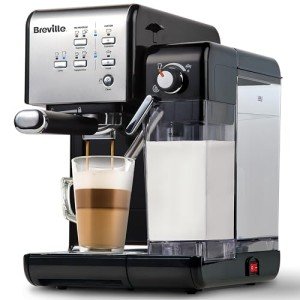Home Use Espresso Machines: A Comprehensive Guide
Espresso machines have actually become a staple in numerous households as coffee enthusiasts seek to reproduce café-quality brews in the convenience of their kitchens. The increase in popularity has led to a varied market filled with different models, functions, and rates. This post aims to supply a useful introduction of home use espresso machines, assisting readers navigate their alternatives successfully.
Comprehending Espresso Machines
Espresso machines work by forcing hot water through finely-ground coffee under high pressure, resulting in a concentrated coffee beverage referred to as espresso. There are a number of kinds of espresso machines categorized based on their developing techniques and level of automation. The most common types consist of:
- Manual Espresso Machines: These need the user to manage the pressure and water flow, enabling a more hands-on coffee-making experience.
- Semi-Automatic Espresso Machines: These use automatic control over water pressure, while the user manually grinds and tamps the coffee.
- Automatic Espresso Machines: With the push of a button, these machines immediately manage the circulation of water, making it easier to brew espresso with constant results.
- Super-Automatic Espresso Machines: These all-in-one machines manage grinding, tampering, developing, and even milk frothing, making them perfect for users searching for benefit.
- Pill or Pod Machines: These use pre-packaged coffee pods to create espresso with very little effort, however they limit choice in developing strategies and tastes.
Table: Comparison of Espresso Machine Types
| Type | Control Level | Reduce of Use | Cleaning up Level | Ideal For |
|---|---|---|---|---|
| Manual | User-controlled | Moderate | High | Coffee perfectionists |
| Semi-Automatic | Partial automation | Moderate | Moderate | Home baristas |
| Automatic | Completely automated | Easy | Low | Busy individuals |
| Super-Automatic | Fully automated | Extremely simple | Very low | Convenience candidates |
| Capsule/Pod | Totally automated | Really simple | Extremely low | Casual drinkers |
Secret Features to Consider
When choosing a home use espresso machine, it's essential to consider numerous features that can substantially affect the quality of espresso and user experience.
- Pressure: Look for machines that offer a minimum of 9 bars of pressure, as this is thought about optimum for brewing espresso.
- Boiler Systems: Single vs. dual boiler systems figure out temperature level stability and the ability to brew espresso and steam milk concurrently.
- Grinder: Integrated grinders permit freshly ground coffee, which enhances flavor. Think about Energy-Efficient Espresso Machines with adjustable grind settings.
- Milk Frother: For those who delight in cappuccinos and lattes, an integrated steam wand or automatic frother is essential.
- Size and Design: Consider your cooking area area and aesthetic preferences. Machines can be found in numerous sizes, from compact to large setups.
- Cost: Home espresso machines can vary from a couple of hundred to a number of thousand dollars, so it's important to establish a budget before checking out alternatives.
Pros and Cons of Home Use Espresso Machines
| Pros | Cons |
|---|---|
| Convenience of developing coffee in the house | Preliminary investment can be high |
| Quality of espresso is frequently superior | Needs some ability, specifically with manual machines |
| Capability to try out flavors | Upkeep and cleaning can be labor-intensive |
| Can conserve money in the long run | Not all machines will fit every coffee choice |
Upkeep and Cleaning Tips
Maintaining an espresso machine is essential for prolonging its life and making sure consistent brew quality. Here are some useful ideas:
- Regular Descaling: Minerals from water can develop in the machine. Descale every 1-3 months, depending on water hardness.
- Daily Cleaning: Rinse portafilters, baskets, and steam wands after each use to prevent coffee oils from building residue.
- Use Filtered Water: This can assist lower mineral buildup and enhance the taste of coffee.
- Change Gaskets and Seals: These components may wear out gradually and should be changed to preserve pressure and performance.
- Read the Manual: Each machine has particular care instructions; following these will ensure durability.
Frequently Asked Questions About Home Use Espresso Machines
Q1: What is the best budget espresso machine?The best budget espresso machine often depends upon individual requirements, but designs like the DeLonghi EC155 or the Breville Bambino are popular among users for providing excellent value. Q2: How long do home espresso machines generally last?With correct upkeep, home espresso machines can last anywhere from 5 to 15 years, depending upon the quality of the machine and frequency of use. Q3: Can I make coffees and lattes with any espresso machine?While most espresso machines can make cappuccinos and lattes, having a reliable
steam wand or frother is necessary for accomplishing the right milk texture.
Q4: Are super-automatic machines worth the investment?For those who focus on benefit and fast developing, super-automatic machines can be worth the financial investment, though they may do not have some customizability in brew strength and taste. Q5: What types of coffee beans are best for espresso?While personal choice plays a function, beans labeled as" espresso "blends are usually roasted darker, developing rich flavors and a creamy texture when brewed.
Purchasing a home espresso machine can change the everyday coffee regimen into something unique, elevating home brews to café quality. By understanding the various kinds of machines, crucial features to consider, upkeep requirements, and weighing the
advantages and disadvantages, consumers can make informed decisions that fit their individual choices. As the espresso culture continues to grow, no matter the choice, every brew can be a delicious experience waiting to be enjoyed.

